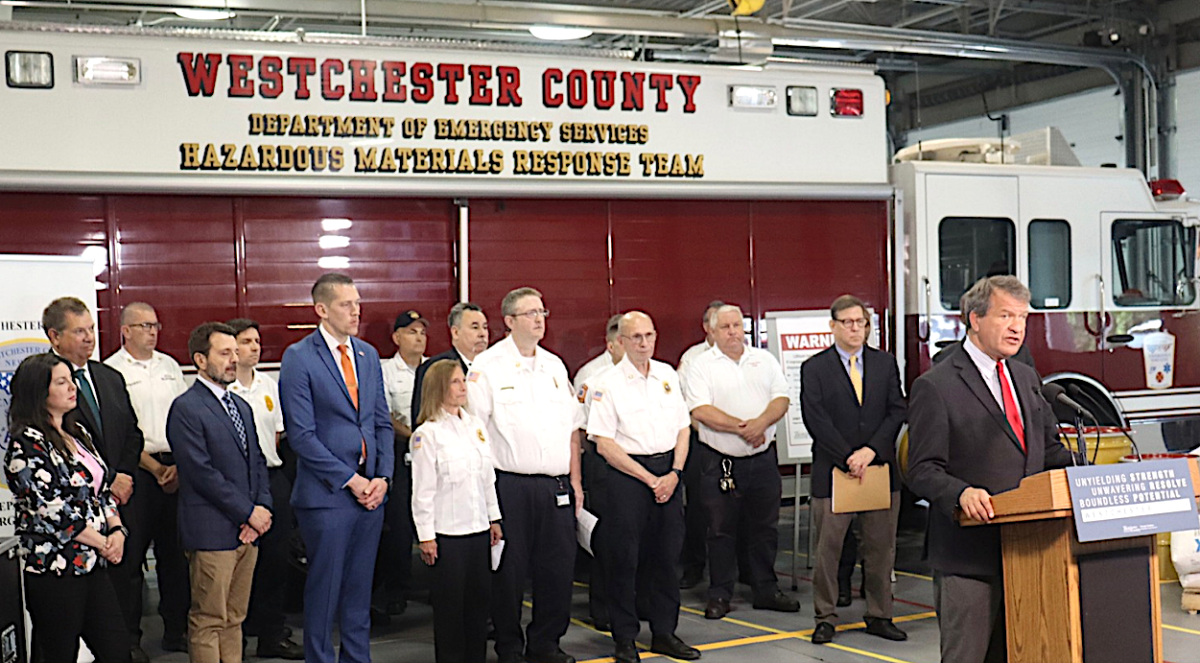Westchester charges ahead with lithium-ion battery safety plans
Westchester County has begun an effort to combat hazards that can be created by improper use and disposal of lithium-ion batteries as well as the sale of damaged or low quality reassembled units. The county’s action comes as the number of incidents involving lithium-ion batteries continues to increase nationwide.
On July 27, the U.S. Consumer Product Safety Commission (CPSC) is scheduled to hold a meeting on lithium-ion battery safety, with a specific focus on fires occurring in e-bikes and the fire risks that may arise with the growing use of the batteries in various consumer products.

From January 1, 2021, through November 28, 2022, CPSC received reports of at least 208 fires or overheating incidents involving lithium-ion batteries in 39 states, and that reported number may just scratch the surface. Those incidents resulted in at least 19 fatalities, including five deaths associated with e-scooters, 11 with hoverboards, and three with e-bikes. CPSC also received reports of at least 22 injuries that resulted in emergency department visits, with 12 of the injuries involving e-scooters and 10 of them involving e-bikes.
As of July 6, New York City’s Fire Department reported nine deaths and 64 people injured in 125 fires so far in 2023 related to lithium-ion batteries in e-bikes and similar equipment. FDNY Chief of Department John Hodgens provided a graphic description of what unfolded in April at a residence in Queens.
“A fire started on the first floor in the vestibule. The cause of the fire was an e-bike. It created a heavy fire condition at the first-floor level, which was able to travel directly up the stairs,” Hodgens said. “Upstairs were six occupants. Four of them were able to jump out the windows and two unfortunately are deceased. Our units arrived in three minutes. The way these fires occur, it”™s like an explosion of fire. The occupants have very little chance of escaping. We have been talking about this for a couple of years and how dangerous it is to store these devices anywhere near your exit. This bike was right at the front door of the house and the occupants didn”™t have a chance to get out of the building.”

Lithium-ion batteries are used in a wide range of consumer products, including cell phones, laptops, power tools, and micromobility products such as hoverboards, e-bikes and scooters. Large versions are used in electric vehicles and in large energy storage systems that typically are used to store solar energy for use when the sun isn’t shining.
New Rochelle has had at least five lithium-ion battery fires in locations that included the back of a garbage truck, the loading dock of Home Depot and apartment buildings. The worst fire, in a multi-family building two blocks from City Hall resulted in the residents of the entire building being displaced for weeks.

In Orange County, Warwick’s Board of Trustees on July 3 held a meeting to discuss fires at two energy storage facilities, one of which was on property owned by the local school system. There were no injuries. The local fire chief said the battery fires could not be put out with water and need to burn out on their own.
Westchester County Executive George Latimer was joined by representatives of various county agencies at the Department of Emergency Services in Valhalla for an event introducing the county’s new lithium-ion battery safety efforts.

“Lithium-ion battery fires can be exceptionally difficult to control,” Latimer said. “In Westchester, we are committed to ensuring the safety of our residents and those who protect from these deadly fires.”
The Latimer Administration is proposing legislation regarding lithium-ion batteries for the Board of Legislators to consider in its normal legislative process, including obtaining public input and making any revisions deemed necessary. The proposed legislation would require merchants to provide point of sale warnings and provide safety information about the batteries. There would be a fine of $1,000 if a merchant failed to provide required warnings or other material. There would be a requirement that Underwriters Laboratories (UL) safety standards be met and the sale of re-assembled or damaged batteries would be prohibited.
To ensure safe handling of damaged or depleted batteries, the county’s Department of Environmental Facilities will be accepting some types of lithium-ion batteries for disposal at its Household Material Recovery Facility in Valhalla. Larger batteries such as are used in electric vehicles will not be accepted. The county points out that some manufacturers handle lithium-ion battery disposal directly and that certain brands of batteries used for e-bikes can be brought to local bike stores for disposal.
Department of Emergency Services (DES) Deputy Commissioner Susan Spear explained that the county’s battery safety program includes legislation, disposal options, education, and firefighter training.
Doug Stiller, chief of special operations for the DES said that overcharging or overdischarging a lithium-ion battery can cause internal damage to the battery.
“We’re all used to having traditional technology in batteries, such as alkaline batteries that can be dropped, kicked over, run over, and not really have a problem,” Stiller said. “In today”™s day and age with lithium-ion batteries, with the amount of energy that’s stored inside of them, they have a lot tighter tolerances to damage. That’s the stuff we need to look at early, and get rid of the batteries before it causes a problem. One of the biggest things we have problems with lithium-ion batteries is that they go through a process called thermal runaway. It’s a chemical reaction that occurs and once it starts you cannot stop it. It’s going to catch fire, create flames, gases that are highly flammable, highly toxic.”
Stiller said that in a thermal runaway situation the battery case can crack open and flames can shoot out several feet. He said that sparks may be shot across a room and debris can be sent flying.
“We believe that lithium-ion batteries are going to continue to be used in more and more settings in our society and while science and technology may make them safer over time, we have to deal with them in the real world right now,” Latimer said.